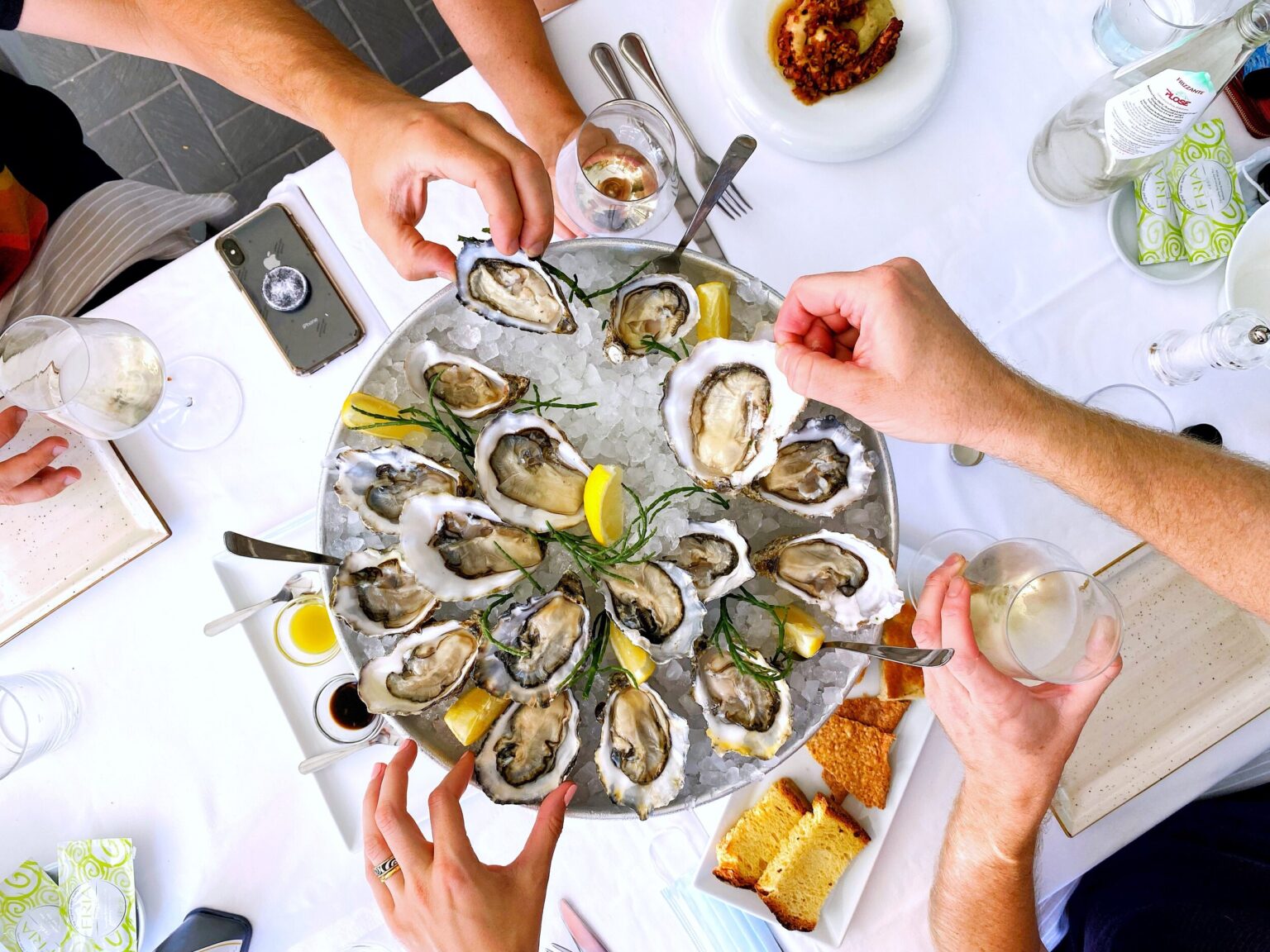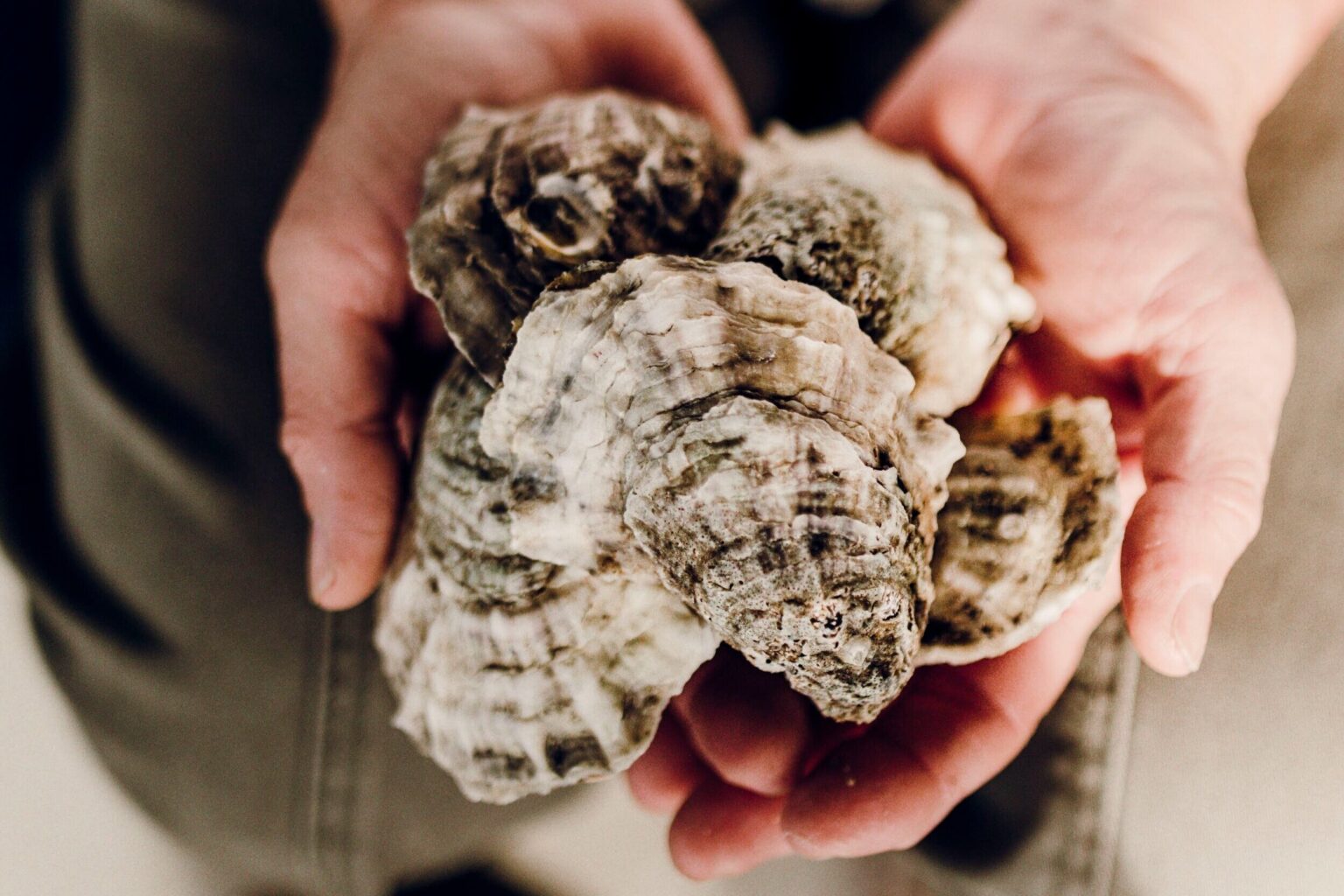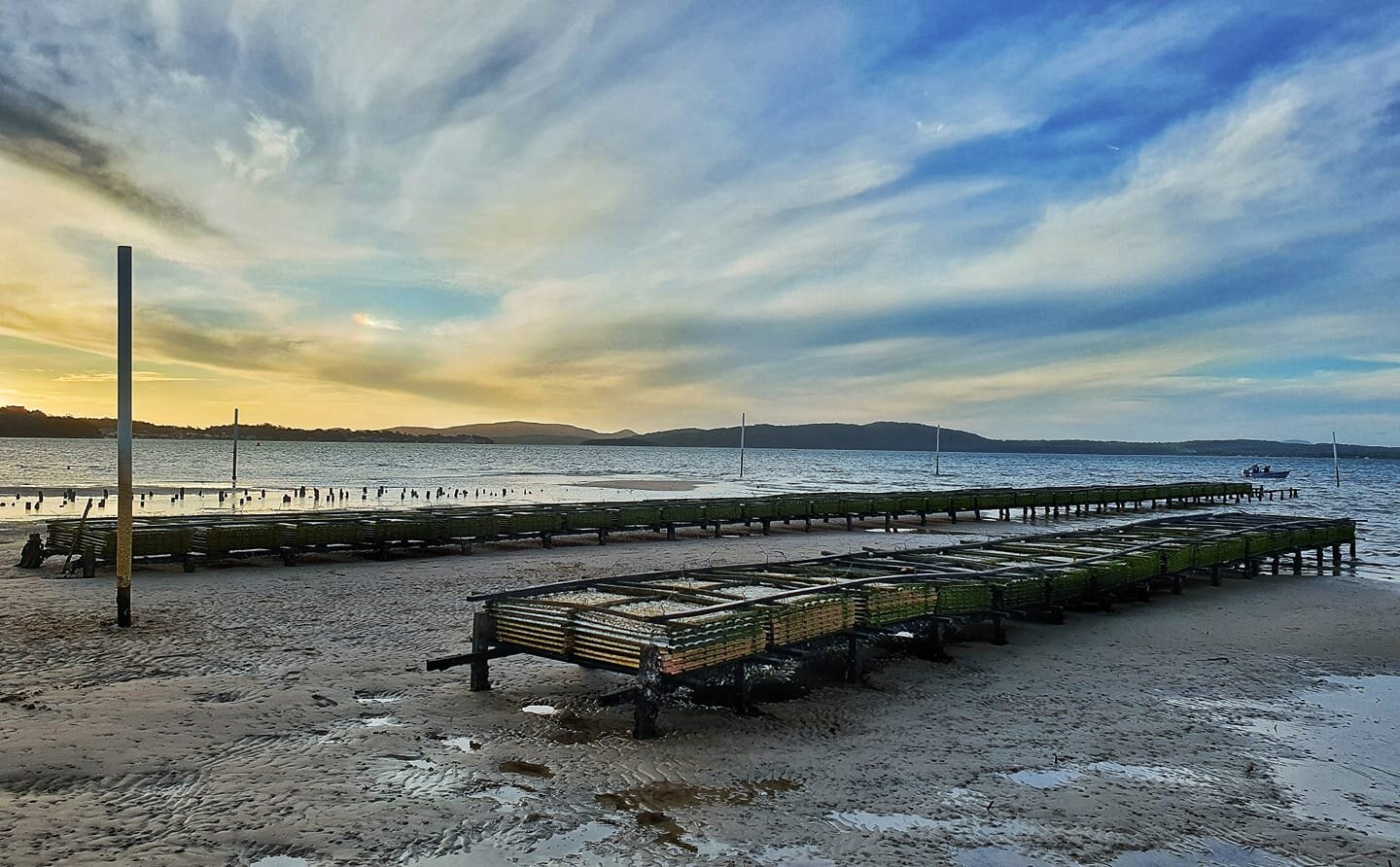Oyster Barba: A Masterfully Curated Oyster Experience in Italy

After a year and a half of anticipation and challenges, boarding a plane to Italy in August 2021 felt surreal; somewhere in between a great privilege and the forbidden fruit. An overnight flight into Milan gave us time to catch up on books, watch a new movie before it’s debut on Netflix, and drink enough wine to wet the palate before our gastric adventures. As we hit the tarmac and moved through customs, our smiles grew larger and larger. Albeit sweaty and unshowered, we were proud and amazed we’d crossed international borders again.
Knowing we wouldn’t be visiting the Italian coast this trip, I guilted our two accompanying friends into at least one oyster meal before heading south for our Tuscan adventure. The week prior I was tearing through Google to find an oyster bar between Milan and Montalcino, with just two criteria for the mission:
-
Find a place that has an actual oyster menu, and
-
Italian oysters must be on the list.
We landed on a restaurant named Oyster Barba in Modena, which was en route to our stay in the mountains near Bologna. It would be our first stop on the trip—only second to a round of espressos in Milan to shake off the jetlag. My husband, Warwick, found the place (such a great travel agent) and after some internet sleuthing I uncovered beautiful photographs of finely shucked oysters at the hands of a man named Nicholas, their oyster extraordinaire. I grew excited. My poorly translated Italian got us a booking via WhatsApp and sure enough, four friends with hungry stomachs took off in a heavily packed Fiat to Modena.
Upon arrival, we were greeted at the entrance of Oyster Barba by Morena, a petite woman with two long braids and an inviting smile. She was expecting us to arrive, like a friend summoning you into the doors of a dinner party, and this immediate feeling of friendship alone would be foresight into their hospitality. Morena is one of three siblings who own the restaurant. She cajoled me over to the bar to see their oysters beneath the glass, beaming down with me at their selection. Morena affirmed that they would manage our menu and oyster tasting and I enthusiastically obliged. It was rare to have this level of intimacy for a curated oyster experience back home, let alone expect it here in Italy.
The first chef preparation was a small bite of salt-packed anchovy with cream cheese on densely warm bread, alongside a paste made with fresh local tomatoes on a square of deep-fried pasta. The heavenly salt, acid, and fat seemed to curb my hunger pangs from the long flight over, until their entire selection of homemade breads arrived alongside a local extra virgin olive oil, La Terra di Domenico, a bottle made uniquely for the restaurant. My appetite grew at the sight of it all.
Laura, our server, was an extraordinary teacher and mentor for the experience. We discovered during conversation that she was going to school to study geology, which made sense after her keen knowledge on the Emilia-Romagna region’s terroir. She recommended bottle of Quinto Passo’s Cuvée Paradiso by Cleto Chiarli, a sparkling white (“Spumante” in Italian) made with Chardonnay and Sorbara grapes and grown just over the mountainside. Bright, refreshing, and spicy to finish, it was an ideal palate cleanser for the upcoming oysters.
When Nicholas, “Nik,” arrived to the table for introductions, I knew immediately that we were kindred spirits. He is Morena’s brother, a young and brilliant individual who naturally discusses oysters like he grew them all himself. Laura began to translate for him, and laughed as she encouraged Nik to take pauses so she could make sure to pass on more details. Laura flawlessly articulated the day’s stories, ingredients, flavor profiles, and processes. I was in total awe from the day’s dialogue and the compassion and knowledge that the entire team shared with us.
Soon thereafter, I could not rub the smile off my face as Nik delivered a prestigious tray of oysters on ice to the table. We rallied together in praise of the twinkling shells and their feathery ends that laced the circumference of the serving plate. Hues of pinks and blues dotted through their pearly interiors in the sun. Edible seaweed garnished all the icy spaces in between, and a separate tray of lemon and balsamic mignonettes, thickened with the same local olive oil, accompanied the raw experience.
Our oyster tasting menu with Nik:
-
Ostriche Sandalia (Sardegna, Italy)
-
Tarbouriech “Perla del Delta” (Laguna di Scardovari, Delta del Po, Italy)
-
Gillardeau (Marennes-Oleron, France)
-
La Belle du Nordet (Normandy, France)
-
Louet-Feisser (Carlingford, Ireland)
-
Cocollos (Donegal, Ireland)
Having two comparative Italian oysters on the menu was a one-of-a-kind experience, especially as more than 70% of oysters in Italy today are imported from other parts of Europe. We admired both Nik and Laura’s clear passion in describing their proprietary oysters and the grow-out locations between the Mediterranean and Adriatic Sea, which had their own unique characteristics and stories in contrast with the French and Irish oysters on display.
My favorite oysters of the day were the Tarbouriech Perla del Delta for both the genuine admiration and respect given by Nik and Laura in their story, and the gentle and delicate flavors they provided. There is an initial floral aroma to the nose, and a forward minerality to taste that tees up a very plush and numbing sweetness on the tongue, like the fur on a peach. The oysters are grown by Florent Tarbouriech, an experienced French aquaculturist and biologist who moved to Italy and continued his work. They are grown in the Delta del Po, a northeastern tributary near Porto Tolle on the Adriatic Sea. Each oyster is individually attached to long strings that experience the full rise and fall of the tide and plenty of exposure to the sun. Their shells are a national treasure of bright stripy pinks and pearly interiors. Complete divinity and my personal star of the show.
Here were my tasting notes of the oysters at Oyster Barba (all oysters crassostrea gigas):
Perla del delta: Initial Minerality followed by plush sweetness, delicate aromatic and numbing aftertaste, fruit, medium brine.
Sandalia: Strong Mediterranean brine, light and delicate, hints of cantaloupe, smooth aftertaste. Grown along the coast of Sardinia, an isolated island off Italy’s Mediterranean coast. My first trip to Italy was to Sardinia when I was just 19 years old and studying in Madrid. I remember the crumbly terracotta cliffs that met the sand and the crystal clear, aqua blue waters that stroked the shore. Having an oyster from here brought back fond memories of those deep orange sunsets, the little boats that clanked on the docks by the town of Cagliari on the southern tip.
Gillardeau: This is one of the most revered French oysters that I have had many times, which are known for their strong brine and minerality, but hearty meats. They are finished and fattened in claires (salt basins) for the final months of grow-out. You will always know they are authentic by turning over the shell to find the famous “G” lazered onto the bottom. I always chuckle a little at this. Every luxury from France comes with a strict code of validation.
Louet-Feisser: a famous Irish speciality grown in cold northern brackish waters with a forward seaweed flavor and heartiness that provided a special contrast in flavor profiles from their Southern European friends.
La Belle du Nordet: Normandy oysters, more complex than the Gillardeau in taste, strong brine, heavy algal palate and a slow release of metallic minerality to finish. Nik suggested that these oysters are grown in a very good brackish environment in Normandy.
Cocollos: Sweet with a honeysuckle and nutty finish, and a medium balanced brine. These oysters are grown in the waters of Donegal in the northwest of Ireland.
We were enamored with Nik’s choices, a contrast of local and abroad so that we could identify their unique characteristics. We were so surprised and grateful to have uncovered this hidden treasure at the bottom of a tall building in a landlocked town. Even the Italian seaweed that garnished the plate seemed to end the oysters triumphantly. Like a long strand of chive , its crunchy onion flavors burst into saltwater at the bite.
Nik and the team had also planned our mains with great care and consideration after refreshing our palates with another bottle of Quinto Passo. He chose a meaty Adriatic eel, which was set over a pillow of risotto and garnished with additional smoked eel flakes that waved in the plate as the heat steamed from the dish. “Like seaweed!,” Nik gestured as he created waves with his hands. The eel was divine like lobster but slightly more firm and deeper in umami flavors. I admitted to the table that it reminded me of the alligator meat I once had in New Orleans; textured and savory.
Our friend Paul leaned back in his chair to stretch. “If this is any indication of our trip ahead, we are in good shape.” As we finished our meal with a kind offering of digestif, my eyes relaxed and my heart was full, but it didn’t even end there. Nik returned to our table holding a book in his hands and outstretched it to me. Laura translated, “I want you to have this book, written by one of Italy’s most famous biologists on aquaculture so that you know who we are, and why we care so much for our oysters here in Italy. I’ve read it three times and would like you to have my copy. Writing about oysters is important work.” After repeating “no, no, are you sure?” a hundred times, the book was in my hands and I was bordering tears, moved by Nik’s kindness.
Oyster Barba was named after Nik, Morena, and their older sister Laura’s mother, a generous woman who loved her family through her cooking. It was her passion and preservation of the family’s traditional coastal cuisine that led the three siblings to open Ristorantino della Gio, their first establishment in Modena. Oyster Barba (their Mother’s first name) became a continuation that could focus on their culinary creativity with seafood.
I left Oyster Barba with a full belly, full heart, and a greater lesson on how shellfish forms no boundaries across the world. We find our humanity in sharing the fruits off our shores, as if we’ve been carved from the same reefs that feed us. How poetic are oysters? So much so that we can meet another stranger, speak two different languages, share a meal together, give each other books, and cry waving goodbye in just two hours. Thank you to Nik, Laura, Morena, and our server, Laura, for representing oysters and Italy so beautifully!












